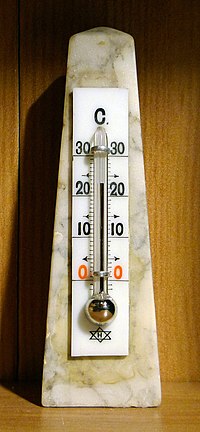
Photo from wikipedia
Recent studies show an increase in the frequency of compound extremes in air temperature and precipitation in many parts of the world, especially under dry and hot conditions. Compound extremes… Click to show full abstract
Recent studies show an increase in the frequency of compound extremes in air temperature and precipitation in many parts of the world, especially under dry and hot conditions. Compound extremes have a significant impact on all spheres of human activity, such as health, agriculture, and energy. Features of atmospheric circulation are closely related to the occurrence of anomalies in air temperature and precipitation. The article analyzes the relationship of atmospheric circulation modes with compound extremes that have had the greatest impact on the Atlantic–European region over the territory of Eastern Europe over the past 60 years on extreme air temperature and precipitation. Combinations of extreme temperature and humidity conditions (indices)— cold-dry (CD), cold-wet (CW), warm-dry (WD) and warm-wet (WW)—were used as compound extremes. Indices of compound extremes were calculated according to the E-OBS reanalysis data. Estimates of the relationship between two time series were carried out using standard correlation and composite analyses, as well as cross wavelet analysis. Phase relationships and time intervals for different climatic indices were different. The period of most fluctuations in the indices of compound extremes was from 4 to 12 years and was observed during 1970–2000. The coherent fluctuations in the time series of the WD and WW indices and the North Atlantic oscillation (NAO) index occurred rather in phase, those in the time series of the CD and WD indices and the Arctic oscillation (AO) index occurred in antiphase, and those in the time series of the WD and WW indices and the Scandinavia pattern (SCAND) index occurred in antiphase. Statistically significant increase in the number of warm compound extremes was found for the northern parts of the study region in the winter season with positive NAO and AO phases.
Journal Title: Climate
Year Published: 2023
Link to full text (if available)
Share on Social Media: Sign Up to like & get
recommendations!